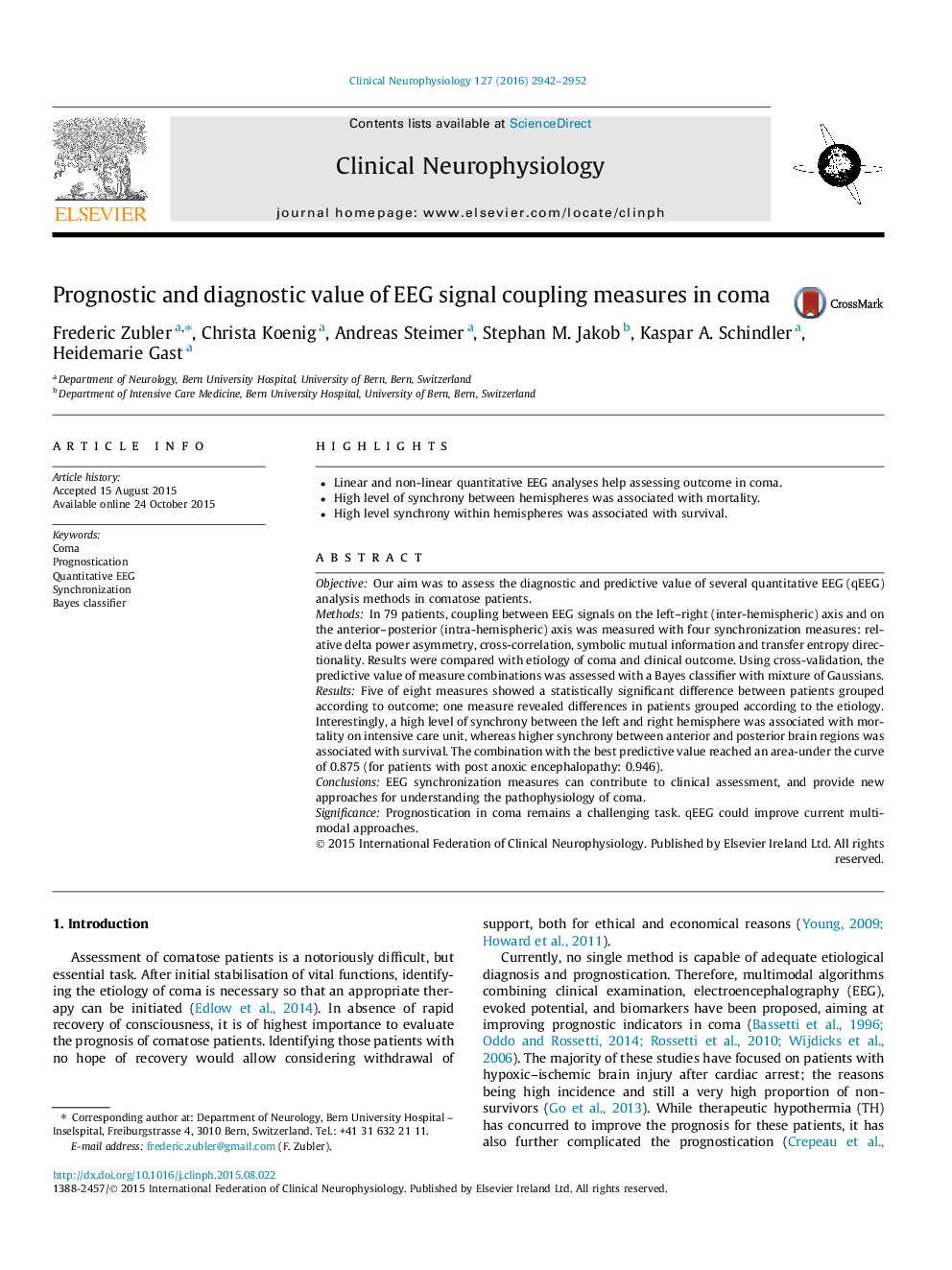| Article ID | Journal | Published Year | Pages | File Type |
|---|---|---|---|---|
| 3042676 | Clinical Neurophysiology | 2016 | 11 Pages |
•Linear and non-linear quantitative EEG analyses help assessing outcome in coma.•High level of synchrony between hemispheres was associated with mortality.•High level synchrony within hemispheres was associated with survival.
ObjectiveOur aim was to assess the diagnostic and predictive value of several quantitative EEG (qEEG) analysis methods in comatose patients.MethodsIn 79 patients, coupling between EEG signals on the left–right (inter-hemispheric) axis and on the anterior–posterior (intra-hemispheric) axis was measured with four synchronization measures: relative delta power asymmetry, cross-correlation, symbolic mutual information and transfer entropy directionality. Results were compared with etiology of coma and clinical outcome. Using cross-validation, the predictive value of measure combinations was assessed with a Bayes classifier with mixture of Gaussians.ResultsFive of eight measures showed a statistically significant difference between patients grouped according to outcome; one measure revealed differences in patients grouped according to the etiology. Interestingly, a high level of synchrony between the left and right hemisphere was associated with mortality on intensive care unit, whereas higher synchrony between anterior and posterior brain regions was associated with survival. The combination with the best predictive value reached an area-under the curve of 0.875 (for patients with post anoxic encephalopathy: 0.946).ConclusionsEEG synchronization measures can contribute to clinical assessment, and provide new approaches for understanding the pathophysiology of coma.SignificancePrognostication in coma remains a challenging task. qEEG could improve current multi-modal approaches.
